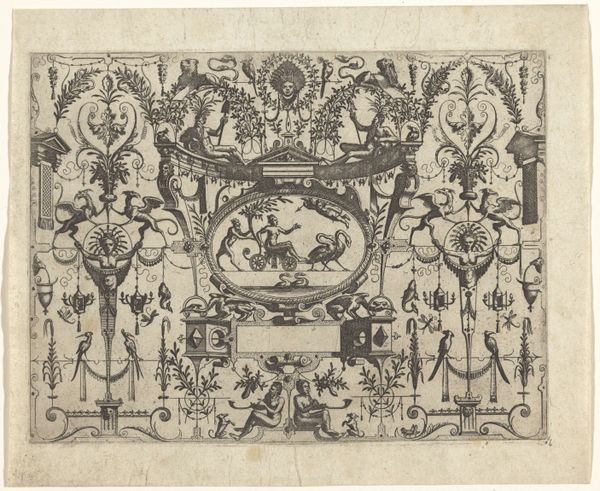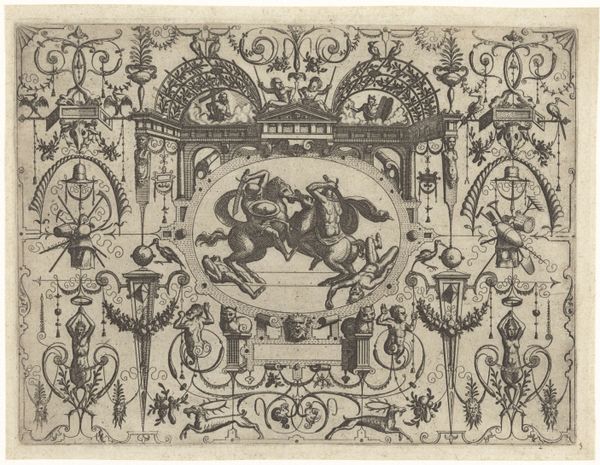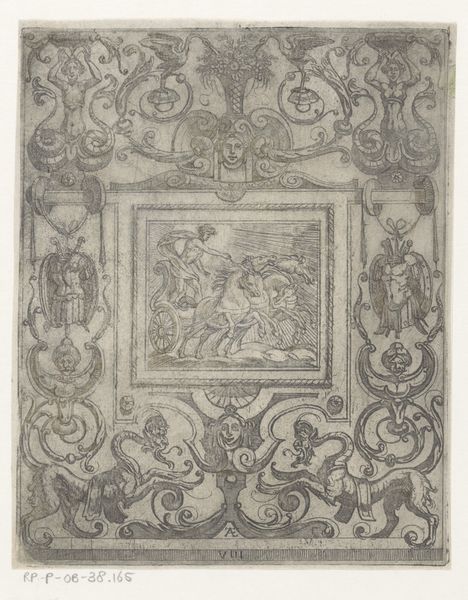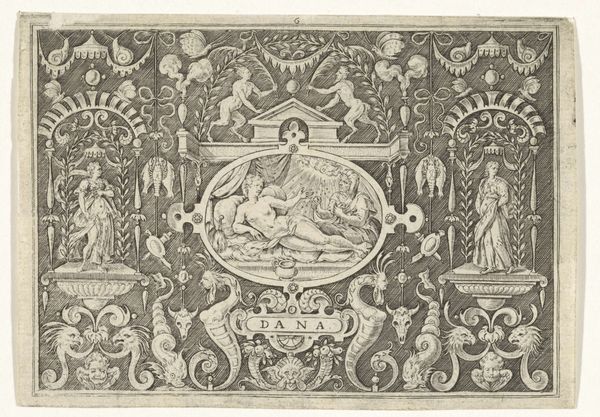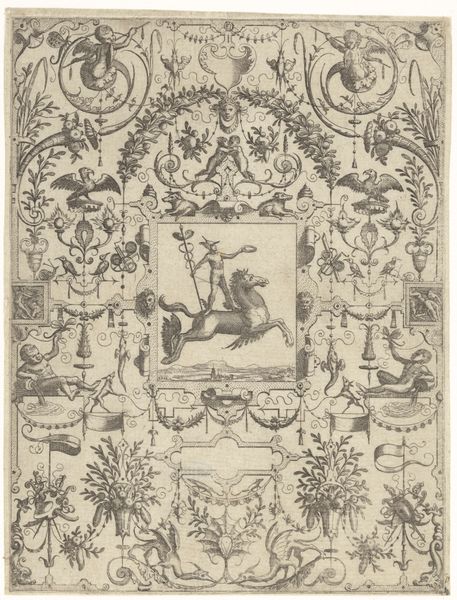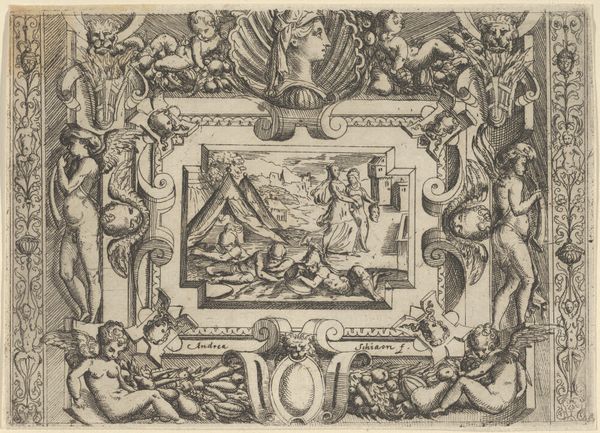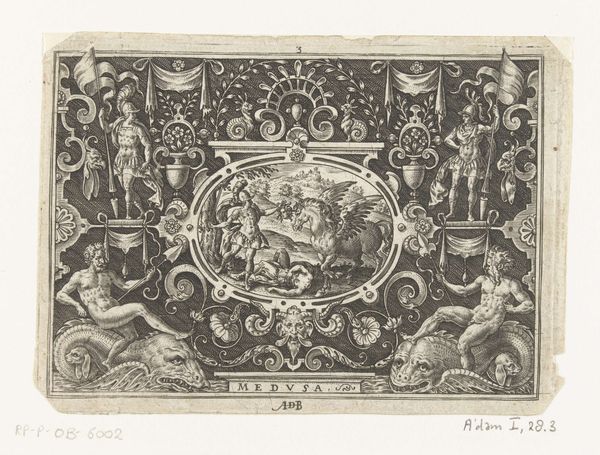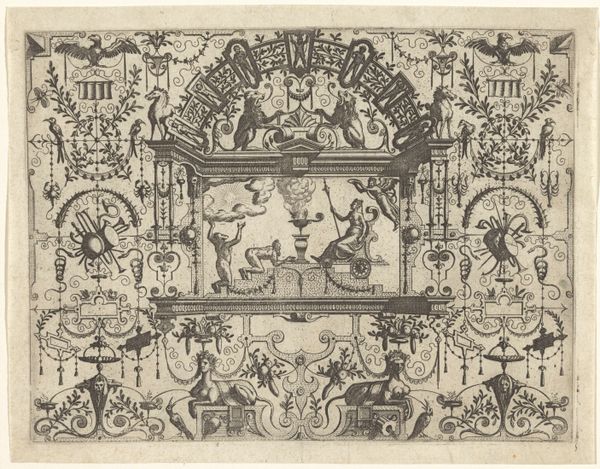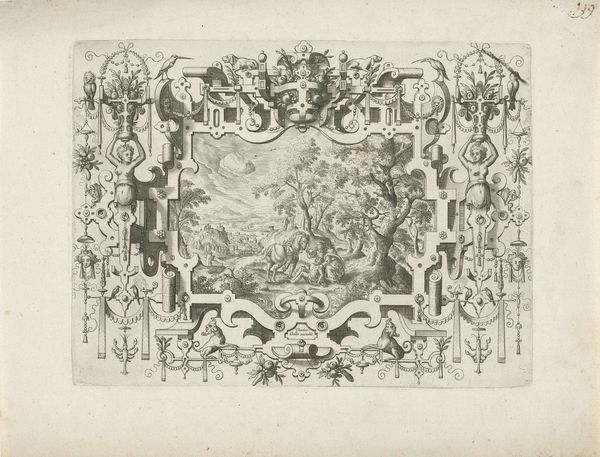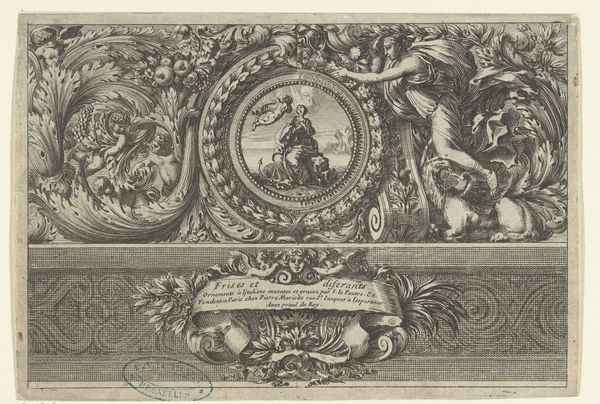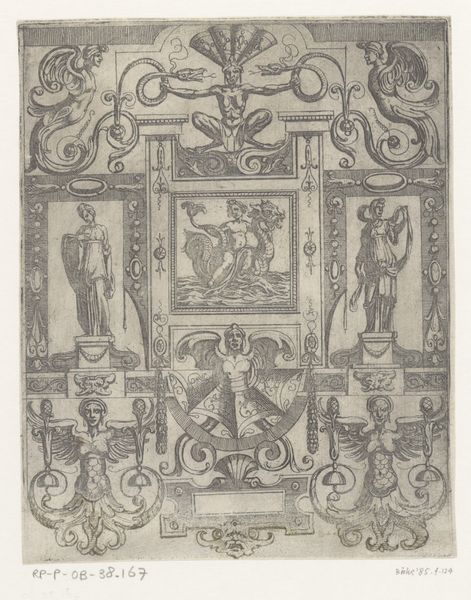
Architectuurfantasie met de val van Bellerophon 1565 - 1571
0:00
0:00
print, engraving
# print
#
old engraving style
#
mannerism
#
11_renaissance
#
history-painting
#
engraving
Dimensions: height 157 mm, width 209 mm
Copyright: Rijks Museum: Open Domain
Editor: So, here we have "Architectuurfantasie met de val van Bellerophon," made sometime between 1565 and 1571 by Johannes or Lucas van Doetechum. It’s an engraving… and wow, it's incredibly detailed! It feels very ornamental, almost overwhelmingly so. What’s your take? How do you even begin to unpack something like this? Curator: You know, it hits me as a total Renaissance fever dream, doesn’t it? Like they threw a classical history book into a blender with a bunch of architectural diagrams and then added cherubs, just because. The central scene, Bellerophon falling from Pegasus, is tiny in comparison to all that wild ornamentation. What strikes me is the sheer exuberance—a kind of visual over-indulgence. Makes you wonder what they were *really* trying to say. Does the fall of Bellerophon serve as a kind of moral center to the image? Editor: That's a great question! I hadn't really thought about that, focusing so much on the... stuff *around* it. Curator: And what about that "stuff"? Those fantastical creatures, those strange architectural elements... Does it read to you as confident or anxious? Are we witnessing the celebration of human intellect through the mastery of form or a sort of fear that chaos lies at the edges of order? It might sound a bit heavy but prints like these, produced in multiples and circulated widely, really worked *hard*. Editor: Now I see more of what you mean; It isn't just a pretty picture. All these elements...they’re like clues! Curator: Exactly! Prints are amazing cultural artifacts because, for their time, they are easily replicated. What stories do you think these images were communicating to the people who would have experienced them? Editor: Well, this has certainly changed my perspective. It’s more than just a historical curiosity. It's like a coded message from the Renaissance! Curator: Precisely! Next time, try approaching these images like you're attempting to translate them. Consider the language used by its creator and imagine how its original audience may have perceived it. Then you might find a surprising and meaningful point of access to this rich world of old engraving.
Comments
No comments
Be the first to comment and join the conversation on the ultimate creative platform.
